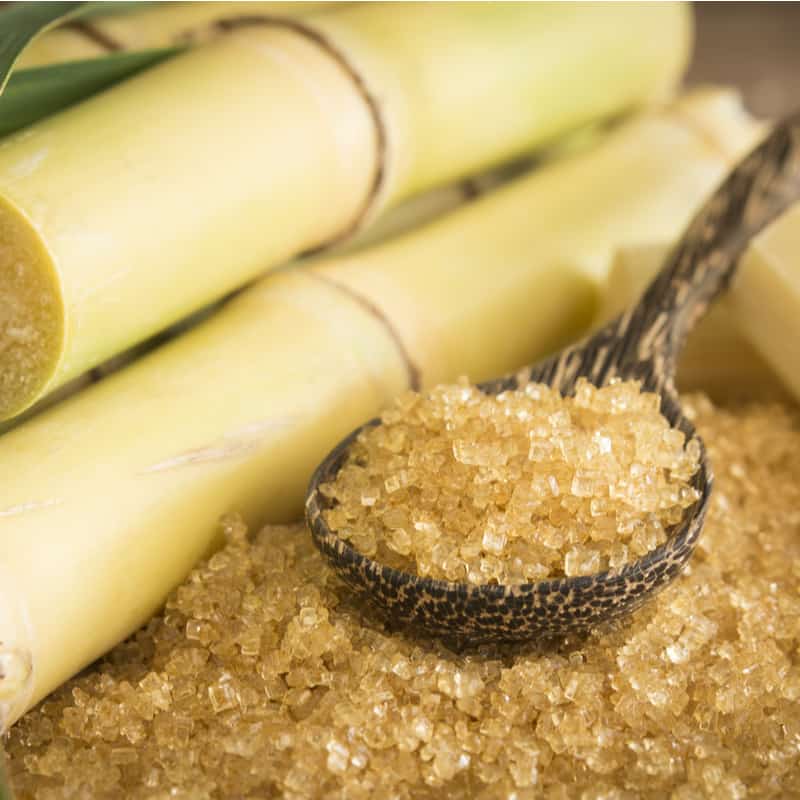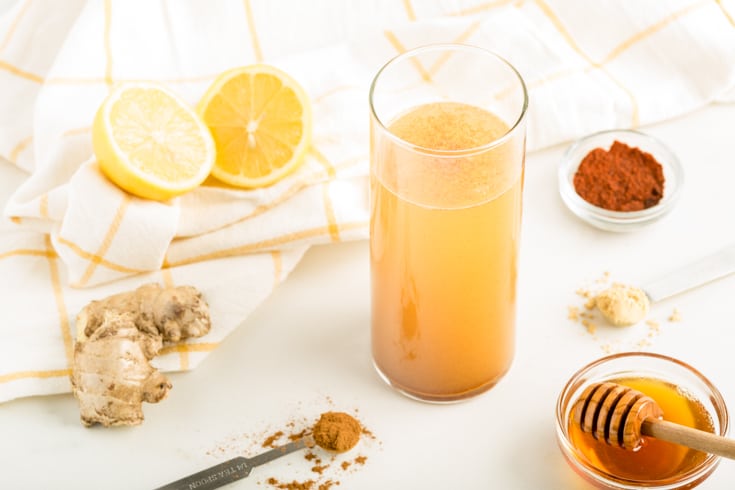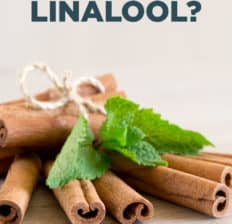This Dr. Axe content is medically reviewed or fact checked to ensure factually accurate information.
With strict editorial sourcing guidelines, we only link to academic research institutions, reputable media sites and, when research is available, medically peer-reviewed studies. Note that the numbers in parentheses (1, 2, etc.) are clickable links to these studies.
The information in our articles is NOT intended to replace a one-on-one relationship with a qualified health care professional and is not intended as medical advice.
This article is based on scientific evidence, written by experts and fact checked by our trained editorial staff. Note that the numbers in parentheses (1, 2, etc.) are clickable links to medically peer-reviewed studies.
Our team includes licensed nutritionists and dietitians, certified health education specialists, as well as certified strength and conditioning specialists, personal trainers and corrective exercise specialists. Our team aims to be not only thorough with its research, but also objective and unbiased.
The information in our articles is NOT intended to replace a one-on-one relationship with a qualified health care professional and is not intended as medical advice.
What Is Linalool? Benefits, Sources + How to Use It
April 15, 2025

Linalool is a naturally occurring terpene alcohol renowned for its pleasant floral aroma and therapeutic properties. Found in more than 200 plant species, including lavender, basil and coriander, it has been utilized for centuries in traditional medicine for its calming effects.
This compound is found in some natural remedies, including certain essential oils. Because it has sedative effects when inhaled, it’s been utilized in traditional medicine practices for many centuries, mostly to treat issues related to stress.
In fact, linalool is considered to be one of the oldest known sedatives (and natural sleep aids) in the world. Modern research has begun to uncover the mechanisms behind its benefits, shedding light on its potential applications in aromatherapy, medicine and beyond.
What is linalool used for today? Its floral aroma is believed to promote relaxation and have calming effects on the body and mind.
This means that linalool benefits include fighting anxiety, insomnia, muscle tension and inflammation.
What is linalool?
Linalool is a terpene compound found in more than 200 plant species. It gives certain plants a floral aroma along with a scent of spice.
It’s different than synthetic scents because it’s naturally found in flowers, spices and even cannabis. However, it can now be created in a laboratory, too. (More on avoiding synthetic scents, which can be irritating, can be found below.)
Most often it’s isolated from plants and added to creams, candles and other beauty products. Plus, it’s present in some essential oils.
Additionally, it’s a common flavoring agent in beverages and foods and has widespread use in cosmetics.
It is also known as:
- beta-linalool
- linalyl alcohol
- linaloyl oxide
- P-linalool
- allo-ocimenol
- 3,7-dimethyl-1,6-octadien-3-ol
- linolool
- linanool
- L-linalool
Mechanism of action
Linalool exerts its effects primarily through interaction with the central nervous system. Studies have suggested that it modulates the activity of gamma-aminobutyric acid (GABA) receptors, which are responsible for inhibiting neural activity, leading to sedative and anxiolytic effects.
Additionally, it has been shown to influence neurotransmitter release, contributing to its muscle relaxant properties.
Is lavender a type of linalool?
Linalyl alcohol terpene is found in plants including:
- lavender
- birch bark
- cinnamon
- mint
- rosewood
- coriander
- cilantro
- basil
- peanuts
- neroli
- cannabis (although it doesn’t have psychoactive effects like other compounds found in cannabis do)
Lavender is one of the best and most popular plant sources of linalool, as are rosewood and neroli oil. In fact, linalyl alcohol is responsible for much of lavender’s signature scent and soothing effects.
Here’s more on some of the plants with higher levels of this terpene:
- Lavender (Lavandula angustifolia): High linalool content, contributing to its calming aroma.
- Coriander (Coriandrum sativum): Contains significant amounts of linalyl alcohol, imparting a spicy scent.
- Sweet basil (Ocimum basilicum): Rich in linalyl alcohol, especially the linalool chemotype.
- Rosewood (Aniba rosaeodora): Notable for its high linalool concentration.
The concentration of linalool in these plants can vary based on factors, such as plant part, harvest time and environmental conditions.
Benefits
Research has suggested that linalool has many health benefits and uses due to the way that terpenes modulate how certain parts of the brain work. It’s been shown that linalyl alcohol can impact one’s mood, sleep, sensation of pain, cardiac rhythms, muscles and more.
Here’s more about what we know about linalool benefits:
1. Calming and stress-reducing
Animal and human studies have demonstrated that linalool has sedative effects and can help calm an overactive nervous system.
The scent of linalool has been shown to act as a natural anxiolytic, meaning it decreases anxiety symptoms and perceptions of stress. It does this by activating the parasympathetic nervous system, which helps us “rest and digest.”
How can smelling something change how you feel so powerfully? Your sense of smell is directly linked to parts of your brain that control emotions and memory.
Olfactory (smell) receptors signal to the limbic and hypothalamic areas of the brain to release neurotransmitters, such as serotonin and endorphins, that link the nervous system to other body systems.
Certain aromas can modulate levels of neurotransmitters, making us feel calmer, energized, even euphoric. More recently, terpenes have been found to directly affect brain processing by modulating behavior of certain brain cells.
Because linalyl alcohol is capable of reducing stress, it can lead to many health improvements, including:
- better sleep
- normalized blood pressure
- less muscle tension
- fewer headaches
- improved digestion
- enhanced immunity
- more energy
2. Has anti-inflammatory and pain-dulling effects
This terpene has been shown to modulate how the brain perceives pain, giving it the ability to decrease overactive responses to injuries or illnesses. It can help with inflammation, swelling (edema), redness, irritation and other contributors to pain.
One study even found that lavender aromatherapy can be used to reduce the demand for opioids during postoperative periods following surgery.
3. Can help boost your immune system
Plants containing linalool, including lavender, are known to help fight negative effects of stress and improve sleep quality, which are both important factors for supporting a healthy immune system.
Stress can impair immune function by altering production of white blood cells, increasing markers of inflammation and even affecting how some genes are expressed. Linalool’s anti-anxiety effects seem to help counteract the body’s stress response.
Linalyl alcohol also seems to have certain antimicrobial properties, helping defend the body against infections. This can be useful not only for your body, but also in certain cleaning and personal care products.
Furthermore, it has antioxidant properties and even possibly anticancer potential.
4. Helps soothe irritated skin
Is linalool safe for skin? It depends on how it’s used, but usually it’s beneficial for skin health because it fights inflammation and harmful bacteria.
For example, lavender oil can be applied to skin rashes to soothe redness, itching and other symptoms. Plus it helps treat issues like razor bumps and razor burn, diaper rash and so on.
Simply combine three drops of pure lavender oil with a half teaspoon of coconut oil, and apply it to the problem area three times per day for rash relief. Lavender oil can also be mixed with grapeseed or almond oil and gently massaged onto the skin.
5. May benefit those with epilepsy and neurological conditions
Linalool is sometimes used to help in the treatment of neurological diseases, including epilepsy (spontaneous seizures,), because of its anticonvulsant properties. Research has suggested that this terpene can alter brain chemicals involved in excitability and muscle contractions, such as levels of glutamate and acetylcholine, potentially helping stop seizures and protect the brain from damage.
Studies also have revealed that linalool may hold promise for helping those with Alzheimer’s disease by fighting cognitive impairments caused by inflammation, brain plaque and other cellular abnormalities, as shown in research on mice. This animal study found that inhalation of linalool over a three-month period helped with memory, learning and spatial awareness among mice with neurodegenerative disorders.
6. Natural bug repellent
The scent of linalool is known to deter mosquitos and act as a natural bug repellent. For example, lavender essential oil and peppermint oil can be used to repel bugs both indoors and outdoors.
Oils containing linalool can be diffused or applied to the skin if mixed with a carrier oil to help repel mosquitos and other insects, preventing bites and rashes.
Dosage and how to use
Linalool is utilized in various forms:
- Essential oils: Extracted from plants like lavender and basil, used in aromatherapy and topical applications.
- Pure linalool: Isolated compound used in research and product formulations.
- Synthetic linalool: Manufactured for use in fragrances and flavorings.
Applications include:
- Aromatherapy: Inhalation of linalool-rich essential oils to promote relaxation and reduce anxiety.
- Topical use: Applied in diluted form for its anti-inflammatory and analgesic properties.
- Ingestion: Used as a flavoring agent in foods and beverages; however, ingestion of concentrated forms should be approached with caution and under professional guidance.
Pure linalool is described as having a fresh, clean, mild, light floral odor with a slight citrus scent.
The most common ways to ingest linalool are through aromatherapy or inhalation of lavender essential oil. You can benefit from the aroma of lavender oil by:
- diffusing it in your home
- adding some to homemade lotions or massage oils
- spritzing some of your sheets and pillow
- inhaling it from the bottle
The same goes with peppermint and cinnamon oils, which also contain terpenes. Use only several drops of essential oil on your skin at a time, mixed with a carrier oil.
Here are ideas for making DIY recipes that contain linalool and other beneficial compounds, such as terpenes and antioxidants:
Risks and side effects
Is linalool toxic to humans? Linalool is a “generally recognized as safe” substance approved by the U.S. Food and Drug Administration as a direct food additive (synthetic flavoring substance) for both human and animal consumption.
That said, it’s important to follow dosage guidelines when using oils or extracts that contain terpenes. If you’re allergic to lavender, rosewood, cinnamon, or other related spices and plants, avoid any products made with linalool.
In some people, linalool can cause some side effects, such as skin irritation, especially when applied undiluted, and allergic reactions.
Remember that essential oils are extremely potent and should only be used in small amounts and according to label directions. They can be used aromatically and topically (per directions) for best results.
If you are taking medications or are pregnant, speak to your doctor about potential interactions before using essential oils.
Linalool is toxic to cats and dogs as well, so avoid using linalool-containing products around pets.
How to avoid synthetic linalool:
When linalool is made synthetically and added to beauty or household products, it will likely be mixed with other chemicals that can cause issues, such as nasal sensitivity, allergies and skin rashes. To avoid this, don’t buy products that list fragrance, parfum, phthalates, DEP, DBP or DEHP as ingredients.
When “linalool” is listed on a label, it’s likely a synthetic, man-made version, not the natural compounds part of a more complex organic essential oil.
Look for products that use organic essential oils when you are looking for a scent. Buying certified organic products also means they’re less likely to include artificial scents (but still read labels).
Frequently asked questions
What does linalool smell like?
Linalool has a light, floral and slightly spicy scent, often compared to lavender with hints of citrus and wood. It’s commonly used in perfumes, cosmetics and essential oils.
Is linalool safe for everyone?
Not for everyone. While linalool is generally safe in small amounts (like in cosmetics or essential oils), some people may experience allergic reactions or skin irritation, especially if it’s oxidized (exposed to air for too long).
How do you use linalool for sleep?
You can use linalool-containing essential oils like lavender or coriander by:
- Diffusing them in your room before bed.
- Applying diluted oil to your temples or wrists.
- Adding a few drops to a warm bath.
- Using a pillow spray that includes linalool.
It’s known for its calming and sedative effects, which may help with sleep.
Can linalool interact with medications?
There’s limited research on specific interactions, but because linalool can affect the nervous system (causing sedation), it may enhance the effects of:
- Sleep aids
- Sedatives
- Anti-anxiety medications
If you’re on any of these, it’s best to check with a healthcare provider before using linalool heavily.
What does linalool do to your body?
Linalool can:
- Act as a sedative or relaxant
- Reduce stress and anxiety
- Offer anti-inflammatory and pain-relieving effects
- Calm the nervous system (at low doses)
What is the controversy with linalool?
The controversy mainly centers around its use in fragrances and cosmetics. When linalool oxidizes, it can become a skin sensitizer or allergen, which has raised concerns among people with sensitive skin or fragrance allergies.
What are the hazards of linalool?
Potential hazards include:
- Skin irritation or allergic reactions
- Eye irritation if it gets in your eyes
- Respiratory irritation (rare, but possible in sensitive individuals or with inhalation of high concentrations)
Should I avoid linalool?
If you have sensitive skin, eczema or known fragrance allergies, it may be best to avoid products with linalool or choose fragrance-free options. Otherwise, linalool is safe for most people in moderate, diluted amounts (like in essential oils, skin care and perfumes).
Conclusion
- What is linalool, and is it safe? It’s a terpene compound found in many species of plants, including lavender, rosewood, mint and cinnamon.
- It’s considered to be a natural sedative, muscle relaxer, sleep enhancer, pain fighter and heart rate reducer.
- You’ll find it in many beauty products and cosmetics, plus essential oils. For anxiety relief, try adding lavender or rosewood oil to lotions, creams, bug sprays, diffusers or aromatherapy, or room sprays.
- As with any compound, mindful usage and consultation with healthcare professionals are recommended to maximize benefits and minimize risks.









